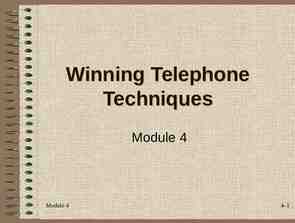Chapter 5 (Horstmann’s Book) Patterns and GUI Programming Hwajung Lee
81 Slides2.86 MB
Chapter 5 (Horstmann’s Book) Patterns and GUI Programming Hwajung Lee
A pattern is a description of a problem and its solution that you can apply to many programming situation. Standardized patterns User defined patterns Pattern presents proven advice in a standard format.
The Pattern Concept ITERATOR Pattern OBSERVER Pattern STRATEGY Pattern ex. Layout Managers COMPOSITE Pattern ex. Components, Containers DECORATOR Pattern ex. Scroll Bars How to Recognize Patterns Putting Patterns to Work
History: Architectural Patterns by Christopher Alexander Each pattern has a short name a brief description of the context a lengthy description of the problem a prescription for the solution
The ITERATOR pattern teaches how to access the elements of an aggregate object.
Context 1. An object (which we’ll call the aggregate) contains other objects (which we’ll call elements). 2. Clients (that is, methods that use the aggregate) need access to the elements. 3. The aggregate should not expose its internal structure. 4. There may be multiple clients that need simultaneous access.
Solution 1. Define an iterator that fetches one element at a time. 2. Each iterator object needs to keep track of the position of the next element to fetch. 3. If there are several variations of the aggregate and iterator classes, it is best if they implement common interface type. Then the client only needs to know the interface types, not the concrete classes.
Names in pattern are examples and may differ in each occurrence of pattern.
Name in Design Pattern Actual Name Aggregate List ConcreteAggregate LinkedList Iterator ListIterator ConcreteIternator An anonymous class that implements the ListIterator interface type createIterator() listIterator() next() next() isDone() Opposite of hasNext() currentItem() Return value of next()
Model/view/controller architecture Model The raw data Data structure No visual appearance Views Visual representations Controllers An object that processes user interaction (using mouse, keyboard, GUI interface, ) Each view has a controller.
When a user types text into one of the windows: The controller tells the models to insert the text that the user typed. The model notifies all views of a change in the model. All views repaint themselves. During paint, each view asks the models for the current text. This architecture minimizes the coupling between the model, views, and controllers.
The OBSERVER pattern teaches how an object can tell other objects about events. Context An object (which we’ll call the subject) is source of events (such as “my data has changed”). One or more objects (called the observer ) want to know when an event occurs.
Solution 1.Define an observer interface type. Observer classes must implement this interface type. 2.The subject maintains a collection of observer objects. 3.The subject class supplies methods for attaching observers. 4.Whenever an event occurs, the subject notifies all observers.
Name in Design Pattern Actual Name Subject JButton Observer ActionListener ConcreteObserver The class that implements the ActionListener interface type attach() addActionListener notify() actionPerformed
FlowLayout: left to right, start new row when full BoxLayout: left to right or top to bottom BorderLayout: 5 areas, Center, North, South, East, West GridLayout: grid, all components have same size GridBagLayout: the rows & columns can have different sizes and components can span multiple rows and columns
Panel Set layout manager JPanel keyPanel new JPanel(); keyPanel.setLayout(new GridLayout(4, 3)); Add components for (int i 0; i 12; i ) { keyPanel.add(button[i]); } //end for
Same backend as text-based system Only Telephone class changes Buttons for keypad Text areas for microphone, speaker
Panel with BorderLayout for speaker JPanel speakerPanel new JPanel(); speakerPanel.setLayout(new BorderLayout()); speakerPanel.add(new JLabel("Speaker:"), BorderLayout.NORTH); speakerField new JTextArea(10, 25); speakerPanel.add(speakerField, BorderLayout.CENTER); Laying out the microphone Component
Arrange keys in panel with GridLayout: JPanel keyPanel new JPanel(); keyPanel.setLayout(new GridLayout(4, 3)); for (int i 0; i 12; i ) { JButton keyButton new JButton(.); keyPanel.add(keyButton); keyButton.addActionListener(.); }
Put speaker, keypads, and microphone panel into content pane Content pane already has BorderLayout Ch5/mailgui/ Telephone.java
Odd-numbered components right aligned Even-numbered components left aligned Implement LayoutManager interface type
public interface LayoutManager { Dimension minimumLayoutSize(Container parent); Dimension preferredLayoutSize(Container parent); void layoutContainer(Container parent); void addLayoutComponent(String name, Component comp); void removeLayoutComponent(Component comp); }
Ch5/layout/FormLayout.java Ch5/layout/FormLayoutTester.java
The STRATEGY pattern teaches how to supply variants of an algorithm
Context A class (called context class) can benefit from different variants for an algorithm 2. Clients of the context class sometimes want to supply custom versions of the algorithm 1. Solution Define an interface type that is an abstraction for the algorithm. We’ll call this interface type the strategy. 2. Concrete strategy classes implement the strategy interface type. Each strategy class implements a version of the algorithm. 3. The client supplies a concrete strategy object to the context class. 4. Whenever the algorithm needs to be executed, the context class calls the appropriate methods of the strategy object. 1.
Name in Design Pattern Actual Name Context Container Strategy LayoutManager ConcreteStrategy A layout manager such as BolderLayout doWork() A method of the LayoutManager interface type such as layoutContainer
Containers collect GUI components Sometimes, want to add a container to another container Container should be a component Composite design pattern Composite method typically invoke component methods E.g. Container.getPreferredSize invokes getPreferredSize of components
The COMPOSITE pattern teaches how to combine several objects into an object that has the same behavior as its parts.
Context 1. Primitive objects can be combined to composite objects 2. Clients treat a composite object as a primitive object Solution 1. Define an interface type that is an abstraction for the primitive objects 2. Composite object contains a collection of primitive objects 3. Both primitive classes and composite classes implement that interface type. 4. When implementing a method from the interface type, the composite class applies the method to its primitive objects and combines the results.
Name in Design Pattern Actual Name Primitive Component Composite Container or a subclass such as JPanel Leaf A component that has no children such as JButton or JTextArea method() A method of the Component interface such as getPreferredSize
Scroll bars can surround component JTextArea area new JTextArea(10, 25); JScrollPane pane new JScrollPane(area); JScrollPane is again a component
The DECORATOR pattern teaches how to form a class that adds functionality to another class while keeping its interface.
Context 1. Component objects can be decorated (visually or behaviorally enhanced) 2. The decorated object can be used in the same way as the undecorated object 3. The component class does not want to take on the responsibility of the decoration 4. There may be an open-ended set of possible decorations
Solution 1. Define an interface type that is an 2. 3. 4. 5. abstraction for the component Concrete component classes implement this interface type. Decorator classes also implement this interface type. A decorator object manages the component object that it decorates When implementing a method from the component interface type, the decorator class applies the method to the decorated component and combines the result with the effect of the decoration.
Name in Design Pattern Actual Name Component Component ConcreteComponent JTextArea Decorator JScrollPane method() A method of the Component interface. For example, the paint method paints a part of the decorated component and the scroll bars.
Look at the intent of the pattern (ex1) COMPOSITE pattern: to group component into a whole (ex2) DECORATOR pattern: to decorate a component (ex3) STRATEGYpattern: to wrap an algorithm into a class. Remember common uses (e.g. STRATEGY for layout managers) Not everything that is strategic is an example of STRATEGY pattern Use context and solution as “litmus test”
We can add border to Swing component. Border b new EtchedBorder() component.setBorder(b); Is it an example of DECORATOR?
Component objects can be decorated (visually or behaviorally enhanced) PASS The decorated object can be used in the same way as the undecorated object PASS The component class does not want to take on the responsibility of the decoration FAIL--the component class has setBorder method There may be an open-ended set of possible decorations
Invoice contains line items Line item has description, price Interface type LineItem: Ch5/invoice/LineItem.java Product is a concrete class that implements this interface: Ch5/invoice/Product.java
Bundle set of related items with description price (ex) stereo system with tuner, amplifier, CD player speakers A bundle has line items A bundle is a line item Therefore, COMPOSITE pattern Ch5/invoice/Bundle.java (look at getPrice)
Store may give discount for an item Discounted item is again an item DECORATOR pattern Ch5/invoice/DiscountedItem.java (look at getPrice)
Model/View of the Invoice System GUI has commands to add items to invoice GUI displays invoice Yet, we want to decouple input from display Display wants to know when invoice is modified Display doesn't care which command modified invoice OBSERVER pattern
Use standard ChangeListener interface type public interface ChangeListener { void stateChanged(ChangeEvent event); } Invoice collects ArrayList of change listeners When the invoice changes, it notifies all listeners: ChangeEvent event new ChangeEvent(this); for (ChangeListener listener : listeners) listener.stateChanged(event);
Display adds itself as a change listener to the invoice Display updates itself when invoice object changes state final Invoice invoice new Invoice(); final JTextArea textArea new JTextArea(20, 40); ChangeListener listener new ChangeListener() { public void stateChanged(ChangeEvent event) { String formattedInvoice ; textArea.setText(formattedInvoice); } }; invoice.addChangeListener(listener);
Accessing Invoice items Invoice collect line items Clients need to iterate over line items Don't want to expose ArrayList May change (e.g. if storing invoices in database) ITERATOR pattern
Use standard Iterator interface type public interface Iterator E { boolean hasNext(); E next(); void remove(); } remove is "optional operation" (see ch. 8) implement to throw UnsupportedOperationException implement hasNext/next manually to show inner workings Ch5/invoice/Invoice.java
Simple format: dump into text area May not be good enough OR Invoice on a Web page? E.g. HTML tags for display in browser Want to allow for multiple formatting algorithms STRATEGY pattern
ch5/invoice/InvoiceFormatter.java ch5/invoice/SimpleFormatter.java ch5/invoice/Invoice.java ch5/invoice/InvoiceTester.java
The ITERATOR pattern teaches how to access the elements of an aggregate object.
Context 1. An object (which we’ll call the aggregate) contains other objects (which we’ll call elements). 2. Clients (that is, methods that use the aggregate) need access to the elements. 3. The aggregate should not expose its internal structure. 4. There may be multiple clients that need simultaneous access.
Solution 1. Define an iterator that fetches one element at a time. 2. Each iterator object needs to keep track of the position of the next element to fetch. 3. If there are several variations of the aggregate and iterator classes, it is best if they implement common interface type. Then the client only needs to know the interface types, not the concrete classes.
The OBSERVER pattern teaches how an object can tell other objects about events. Context An object (which we’ll call the subject) is source of events (such as “my data has changed”). One or more objects (called the observer ) want to know when an event occurs.
Solution 1.Define an observer interface type. Observer classes must implement this interface type. 2.The subject maintains a collection of observer objects. 3.The subject class supplies methods for attaching observers. 4.Whenever an event occurs, the subject notifies all observers.
The STRATEGY pattern teaches how to supply variants of an algorithm
Context A class (called context class) can benefit from different variants for an algorithm 2. Clients of the context class sometimes want to supply custom versions of the algorithm 1. Solution Define an interface type that is an abstraction for the algorithm. We’ll call this interface type the strategy. 2. Concrete strategy classes implement the strategy interface type. Each strategy class implements a version of the algorithm. 3. The client supplies a concrete strategy object to the context class. 4. Whenever the algorithm needs to be executed, the context class calls the appropriate methods of the strategy object. 1.
The COMPOSITE pattern teaches how to combine several objects into an object that has the same behavior as its parts.
Context 1. Primitive objects can be combined to composite objects 2. Clients treat a composite object as a primitive object Solution 1. Define an interface type that is an abstraction for the primitive objects 2. Composite object contains a collection of primitive objects 3. Both primitive classes and composite classes implement that interface type. 4. When implementing a method from the interface type, the composite class applies the method to its primitive objects and combines the results.
The DECORATOR pattern teaches how to form a class that adds functionality to another class while keeping its interface.
Context 1. Component objects can be decorated (visually or behaviorally enhanced) 2. The decorated object can be used in the same way as the undecorated object 3. The component class does not want to take on the responsibility of the decoration 4. There may be an open-ended set of possible decorations
Solution 1. Define an interface type that is an abstraction 2. 3. 4. 5. for the component Concrete component classes implement this interface type. Decorator classes also implement this interface type. A decorator object manages the component object that it decorates When implementing a method from the component interface type, the decorator class applies the method to the decorated component and combines the result with the effect of the decoration.






















































































